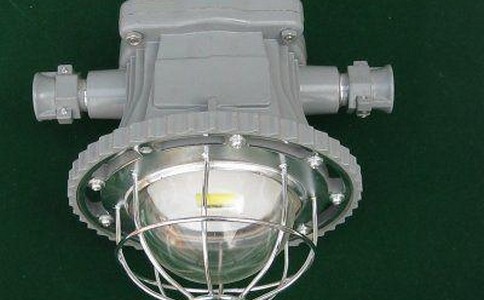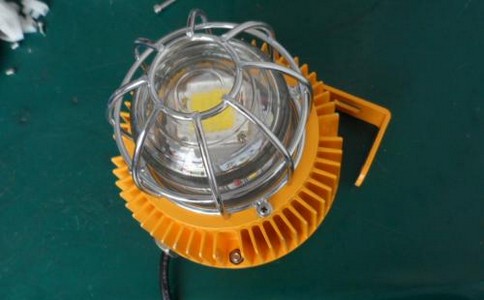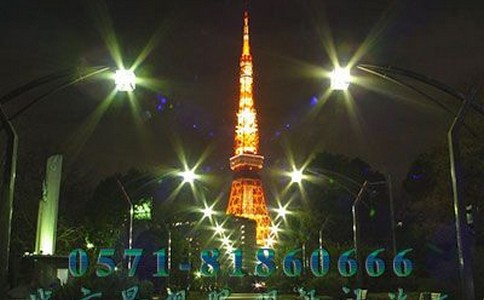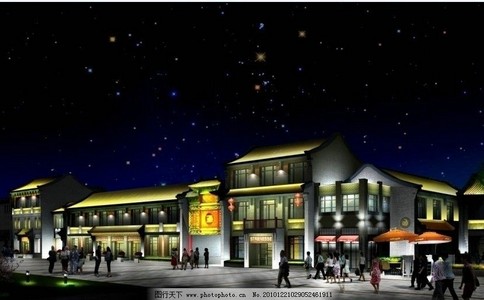
News Center
Exciting information for you
How to solve the problem of light decay of LED lamps
- Categories:Industry Information
- Author:
- Origin:
- Time of issue:2019-02-18 15:17
- Views:
(Summary description) When the LED lamp is used for a period of time, we will find that its light is not as bright as it was at the beginning. This is because the service life of the LED lamp is coming to an end, so the phenomenon of the light decay of the LED lamp appears. So, what causes the light failure of LED lamps? How to solve the problem of light decay of led lamps? What is light decay? At present, my country has not yet formulated the definition and general standard of light decay, but generally speaking, light decay refers to the fact that after a period of lighting, the light intensity of LED lamps will be lower than the initial light intensity and cannot be recovered, that is, the reduced part is Light decay of LED lamps. (Different types of lamps have different causes of light decay) In addition, the US Energy Star LM-80 stipulates 6000H, and the luminous flux maintenance rate ≥ 94.1% is considered invalid. Causes of light decay of led lamps and lanterns As for the cause of light decay, there is still a lot of controversy, and the microscopic mechanism that causes the decay is still inconclusive, but generally speaking, the light decay of LEDs is mainly caused by heat dissipation. It is well known in the industry that LEDs are afraid of heat. The ideal working temperature of LEDs is between -5°~0°, but this is basically impossible. Heat will affect the light decay and life of LED lamps. When LEDs are working, they will About 80% of the electrical energy is converted into light energy. The LED heat sink is used for LED heat dissipation, because when the LED chip is working, its own ambient temperature is inversely proportional to the light output rate. The higher the temperature, the lower the light output rate. , when the temperature reaches the maximum operating temperature of the LED chip, the lamp will be broken. In addition, the thermal resistance of the LED chip itself, the influence of silver glue, the heat dissipation effect of the substrate, and the colloid and gold wires also have a certain relationship with the light decay. How to solve the light decay of led lamps and lanterns In fact, in a strict sense, LED lamps cannot avoid light decay. It is a technical problem that the industry is concerned about urgently to solve. However, as long as we understand the heat dissipation method of lamps, we can minimize the problem of light decay. But before talking about the heat dissipation of LED lamps, we must first understand it: What is junction temperature? The so-called junction temperature is the operating temperature of the PN junction of the semiconductor chip (wafer, bare chip), and the higher the junction temperature, the earlier the light decay occurs. If the junction temperature is 105°, and the brightness is reduced to 70%, the life is only over 10,000 hours, and 95° has 20,000 hours, and when the junction temperature is lowered to 75°, the life is 50,000 hours, and at 65°, it can be extended to 50,000 hours. 90,000 hours. Therefore, the key to prolonging the life is to reduce the junction temperature, and the key to reducing the junction temperature is to have a good heat sink. So how to systematically identify the heat dissipation of LED lamps and lanterns? Generally, as the junction temperature of the LED increases, the luminous flux will decrease. Then, as long as we measure the illuminance change of the lamp at the same position, we can reverse the change of the junction temperature. The specific method is: 1. Choose a place that is not disturbed by outside light, preferably at night, and turn off other lights. 2. Turn on the light in a cold state, and immediately measure the illuminance of a location. At this time, the reading is "cold illuminance". 3. Keep the position of the lamps and illuminometer unchanged, and the lamps continue to work. 4. After half an hour, read the illuminance value here, and write down the reading as "thermal illuminance". 5. If the two values are similar (10~15%), the heat dissipation system of this lamp is basically good. 6. If the two values are very different (greater than 20%), the cooling system of the lamp is questionable. The "half-hour illuminance method" simply measures the junction temperature change. In addition, we can't judge the quality of the radiator just by looking at the cost. We have to choose the most cost-effective one, not the best one for everything. Therefore, the editor's summary is: 1. The radiator is very hot when you touch it by hand, which is definitely not good. If the radiator is not hot when you touch it by hand, it is not necessarily good. 2. In the case of reasonable design, the same weight, the larger the surface area, the better the radiator. 3. The same surface area, the heavier weight, the better the radiator. (The premise is the same material) 4. The fins of the fin radiator are not as many as possible, the denser the better.
How to solve the problem of light decay of LED lamps
(Summary description)
When the LED lamp is used for a period of time, we will find that its light is not as bright as it was at the beginning. This is because the service life of the LED lamp is coming to an end, so the phenomenon of the light decay of the LED lamp appears. So, what causes the light failure of LED lamps? How to solve the problem of light decay of led lamps?
What is light decay? At present, my country has not yet formulated the definition and general standard of light decay, but generally speaking, light decay refers to the fact that after a period of lighting, the light intensity of LED lamps will be lower than the initial light intensity and cannot be recovered, that is, the reduced part is Light decay of LED lamps. (Different types of lamps have different causes of light decay)
In addition, the US Energy Star LM-80 stipulates 6000H, and the luminous flux maintenance rate ≥ 94.1% is considered invalid.
Causes of light decay of led lamps and lanterns
As for the cause of light decay, there is still a lot of controversy, and the microscopic mechanism that causes the decay is still inconclusive, but generally speaking, the light decay of LEDs is mainly caused by heat dissipation.
It is well known in the industry that LEDs are afraid of heat. The ideal working temperature of LEDs is between -5°~0°, but this is basically impossible. Heat will affect the light decay and life of LED lamps. When LEDs are working, they will About 80% of the electrical energy is converted into light energy. The LED heat sink is used for LED heat dissipation, because when the LED chip is working, its own ambient temperature is inversely proportional to the light output rate. The higher the temperature, the lower the light output rate. , when the temperature reaches the maximum operating temperature of the LED chip, the lamp will be broken. In addition, the thermal resistance of the LED chip itself, the influence of silver glue, the heat dissipation effect of the substrate, and the colloid and gold wires also have a certain relationship with the light decay.
How to solve the light decay of led lamps and lanterns
In fact, in a strict sense, LED lamps cannot avoid light decay. It is a technical problem that the industry is concerned about urgently to solve. However, as long as we understand the heat dissipation method of lamps, we can minimize the problem of light decay.
But before talking about the heat dissipation of LED lamps, we must first understand it: What is junction temperature? The so-called junction temperature is the operating temperature of the PN junction of the semiconductor chip (wafer, bare chip), and the higher the junction temperature, the earlier the light decay occurs.
If the junction temperature is 105°, and the brightness is reduced to 70%, the life is only over 10,000 hours, and 95° has 20,000 hours, and when the junction temperature is lowered to 75°, the life is 50,000 hours, and at 65°, it can be extended to 50,000 hours. 90,000 hours. Therefore, the key to prolonging the life is to reduce the junction temperature, and the key to reducing the junction temperature is to have a good heat sink. So how to systematically identify the heat dissipation of LED lamps and lanterns?
Generally, as the junction temperature of the LED increases, the luminous flux will decrease. Then, as long as we measure the illuminance change of the lamp at the same position, we can reverse the change of the junction temperature. The specific method is:
1. Choose a place that is not disturbed by outside light, preferably at night, and turn off other lights.
2. Turn on the light in a cold state, and immediately measure the illuminance of a location. At this time, the reading is "cold illuminance".
3. Keep the position of the lamps and illuminometer unchanged, and the lamps continue to work.
4. After half an hour, read the illuminance value here, and write down the reading as "thermal illuminance".
5. If the two values are similar (10~15%), the heat dissipation system of this lamp is basically good.
6. If the two values are very different (greater than 20%), the cooling system of the lamp is questionable. The "half-hour illuminance method" simply measures the junction temperature change.
In addition, we can't judge the quality of the radiator just by looking at the cost. We have to choose the most cost-effective one, not the best one for everything. Therefore, the editor's summary is:
1. The radiator is very hot when you touch it by hand, which is definitely not good. If the radiator is not hot when you touch it by hand, it is not necessarily good.
2. In the case of reasonable design, the same weight, the larger the surface area, the better the radiator.
3. The same surface area, the heavier weight, the better the radiator. (The premise is the same material)
4. The fins of the fin radiator are not as many as possible, the denser the better.
- Categories:Industry Information
- Author:
- Origin:
- Time of issue:2019-02-18 15:17
- Views:

What is light decay? At present, my country has not yet formulated the definition and general standard of light decay, but generally speaking, light decay refers to the fact that after a period of lighting, the light intensity of LED lamps will be lower than the initial light intensity and cannot be recovered, that is, the reduced part is Light decay of LED lamps. (Different types of lamps have different causes of light decay)
In addition, the US Energy Star LM-80 stipulates 6000H, and the luminous flux maintenance rate ≥ 94.1% is considered invalid.

Causes of light decay of led lamps and lanterns
As for the cause of light decay, there is still a lot of controversy, and the microscopic mechanism that causes the decay is still inconclusive, but generally speaking, the light decay of LEDs is mainly caused by heat dissipation.
It is well known in the industry that LEDs are afraid of heat. The ideal working temperature of LEDs is between -5°~0°, but this is basically impossible. Heat will affect the light decay and life of LED lamps. When LEDs are working, they will About 80% of the electrical energy is converted into light energy. The LED heat sink is used for LED heat dissipation, because when the LED chip is working, its own ambient temperature is inversely proportional to the light output rate. The higher the temperature, the lower the light output rate. , when the temperature reaches the maximum operating temperature of the LED chip, the lamp will be broken. In addition, the thermal resistance of the LED chip itself, the influence of silver glue, the heat dissipation effect of the substrate, and the colloid and gold wires also have a certain relationship with the light decay.

How to solve the light decay of led lamps and lanterns
In fact, in a strict sense, LED lamps cannot avoid light decay. It is a technical problem that the industry is concerned about urgently to solve. However, as long as we understand the heat dissipation method of lamps, we can minimize the problem of light decay.
But before talking about the heat dissipation of LED lamps, we must first understand it: What is junction temperature? The so-called junction temperature is the operating temperature of the PN junction of the semiconductor chip (wafer, bare chip), and the higher the junction temperature, the earlier the light decay occurs.
If the junction temperature is 105°, and the brightness is reduced to 70%, the life is only over 10,000 hours, and 95° has 20,000 hours, and when the junction temperature is lowered to 75°, the life is 50,000 hours, and at 65°, it can be extended to 50,000 hours. 90,000 hours. Therefore, the key to prolonging the life is to reduce the junction temperature, and the key to reducing the junction temperature is to have a good heat sink. So how to systematically identify the heat dissipation of LED lamps and lanterns?

Generally, as the junction temperature of the LED increases, the luminous flux will decrease. Then, as long as we measure the illuminance change of the lamp at the same position, we can reverse the change of the junction temperature. The specific method is:
1. Choose a place that is not disturbed by outside light, preferably at night, and turn off other lights.
2. Turn on the light in a cold state, and immediately measure the illuminance of a location. At this time, the reading is "cold illuminance".
3. Keep the position of the lamps and illuminometer unchanged, and the lamps continue to work.
4. After half an hour, read the illuminance value here, and write down the reading as "thermal illuminance".
5. If the two values are similar (10~15%), the heat dissipation system of this lamp is basically good.
6. If the two values are very different (greater than 20%), the cooling system of the lamp is questionable. The "half-hour illuminance method" simply measures the junction temperature change.

In addition, we can't judge the quality of the radiator just by looking at the cost. We have to choose the most cost-effective one, not the best one for everything. Therefore, the editor's summary is:
1. The radiator is very hot when you touch it by hand, which is definitely not good. If the radiator is not hot when you touch it by hand, it is not necessarily good.
2. In the case of reasonable design, the same weight, the larger the surface area, the better the radiator.
3. The same surface area, the heavier weight, the better the radiator. (The premise is the same material)
4. The fins of the fin radiator are not as many as possible, the denser the better.
Scan the QR code to read on your phone
What are the characteristics of LED roadway lights? Do you know the installation method and precautions? Take a look!
Congratulations to our company for obtaining the Occupational Health and Safety Management System Certification!
contact us

Scan it
Follow us
Copyright © 2021 Nanjing Tansuo Optoelectronics Co., Ltd. All rights reserved Powered by: www.300.cn | 苏ICP备07006102号-1
 Message
Message Contact
Contact Chinese
Chinese

